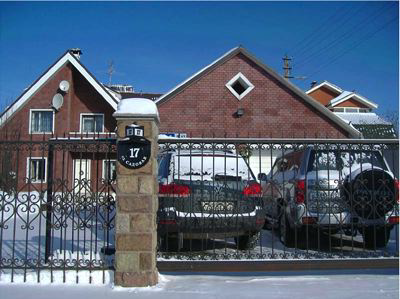No Light Rail in Vancouver!
Touring the World’s Cities by Rental Car

When Americans visit Europe, they usually rely on transit to get around the cities and trains to get between the cities. Since nearly all the Europeans they meet are riding transit or trains, this gives them the impression that most Europeans live that way as well. In fact, Europeans drive for nearly 80 percent of their travel.
My friend Wendell Cox has visited just about every major urban area in the world. He argues that the way to visit a city is to rent a car and see the whole city, not just the central part that is accessible by subways or other public transit. This gives him a very different view of foreign cities.

Living the Russian dream: a home in the suburbs and two cars.
Cox visited Moscow last week and posted his impressions and photos taken on his Moscow
Rental-
Although most of what we hear about Moscow is how it has been taken over by mafia-

Note the Cryllic letters contained within the Latin letters for “MEGA.”
In the 1980s, when Russia was still under central planning, the Economist reported
that the average Russian grocery store had fewer than a dozen different products
on its shelves at any given time. Now they have hypermarts, which typically feature
tens of thousands of grocery products along with many other products — something
like a Wal-
The suburbs Cox found appear to be little different from those in America. The main
visual difference is the more steeply pitched roofs, which may be a concession to
greater snowfall. The percentage of Muscovites who live in single-
Despite the low-
Much of that density is in high-

I once accompanied Wendell on one of his rental car tours. (See this photo-
0
Trackback • Posted in Urban areas
Reprinted from The Antiplanner